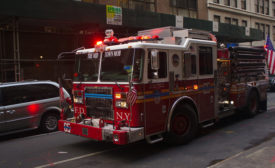News
CDC releases guidelines for prescribing opioids for chronic pain
Recommendations to improve patient care, safety, and help prevent opioid misuse and overdose
March 22, 2016
Firefighter Cancer Registry Act introduced in Congress
Bill from NY Representative Hanna would create a collection of firefighter cancer data
March 21, 2016
Never miss the latest news and trends driving the safety industry
eNewsletter | Website | eMagazine
JOIN TODAYCopyright ©2024. All Rights Reserved BNP Media.
Design, CMS, Hosting & Web Development :: ePublishing








